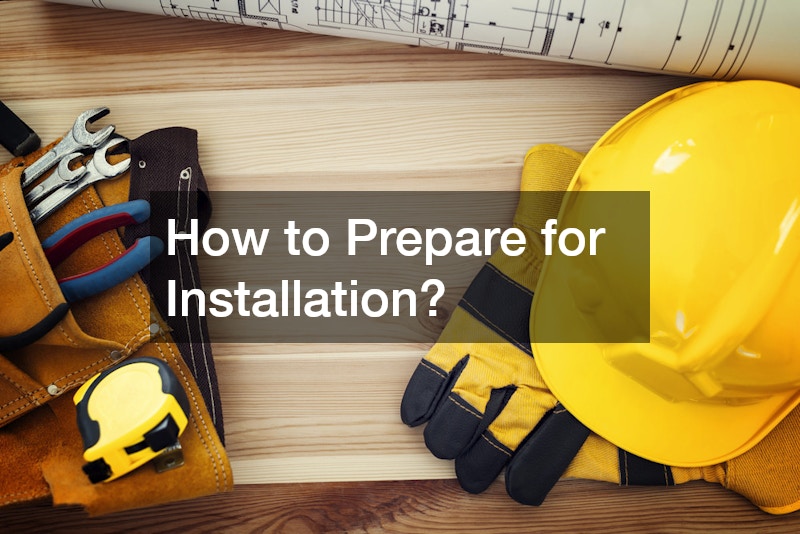Upgrading your home heating system is one of the most impactful improvements you can make to boost comfort, efficiency, and long-term savings. Whether you’re replacing an aging furnace, switching fuel types, or considering smart technology, there’s a lot to consider. This guide explores key questions surrounding heating upgrades so you can make confident, informed decisions.
Why Upgrade Your Home Heating System?

Identifying Signs of an Outdated System
Your heating system doesn’t have to stop working completely to show that it’s outdated. Common signs include uneven temperatures, frequent calls for HVAC service, increased utility bills, and strange noises coming from your furnace or boiler. These symptoms often point to inefficiencies, outdated components, or even failing infrastructure such as aging ductwork or an old oil tank.
Benefits of a Modern Heating System
Upgraded systems come with new features and designs that enhance performance. From whisper-quiet operation to advanced filtration and humidity control, modern systems deliver improved air quality and comfort. Many homeowners also take this opportunity to eliminate legacy issues such as outdated thermostats or corroded fuel oil tanks.
Energy Efficiency and Cost Savings
New heating systems typically come with much higher energy efficiency ratings than older models. If you currently rely on an oil-based system, upgrading to a high-efficiency fuel oil furnace or exploring hybrid solutions can drastically lower your consumption. By replacing older units and integrating energy-smart technologies, you not only reduce monthly costs but also minimize your environmental impact.
Improving Home Comfort
Today’s heating and cooling service professionals focus heavily on system design to optimize comfort. This includes proper duct placement, upgraded thermostats, and even integrating radiant heating systems for areas like bathrooms or basements. Radiant systems, in particular, are appreciated for delivering steady, floor-up warmth without forced air movement.
Increasing Property Value
Prospective buyers are often willing to pay more for homes with newer, energy-efficient heating systems already in place. A well-documented HVAC upgrade—especially if paired with oil tank removal or a conversion to cleaner fuel sources—adds significant value. Homes with modern systems and recent HVAC service records tend to sell faster and at higher prices.
How to Choose the Right Heating System?
Types of Heating Systems
Homeowners can choose from several heating system options, including furnaces, boilers, radiant heating systems, ductless mini-splits, and heat pumps. Boilers are especially popular in older homes and can be retrofitted with modern controls. When selecting a boiler, factor in the availability of boiler repair technicians in your area to ensure long-term support.
Calculating Heating Load Requirements
Every home has a unique heating load requirement, influenced by size, layout, insulation, and local climate. An HVAC service provider will perform a Manual J load calculation to match your home with the right system. This prevents issues like short-cycling, which can reduce the system’s lifespan and waste energy.
Fuel Source Considerations
Your choice of fuel—whether it’s natural gas, electricity, propane, or fuel oil—has a direct impact on operating costs and environmental footprint. Many homeowners still rely on fuel oil, especially in rural areas where natural gas lines aren’t available. If you’re considering a switch, consult with both a heating contractor and a plumber to assess your infrastructure and any water-related connections.
Comparing Initial and Operating Costs
Initial installation costs are just one part of the equation. Long-term operating costs, including energy bills, ac maintenance service, and necessary repairs like boiler repair or heat pump servicing, will add up over time. Make sure to evaluate both upfront and ongoing expenses, including whether the system requires regular fuel oil deliveries or electrical service upgrades.
Importance of Professional Advice
Selecting the right system should involve guidance from a licensed HVAC service technician. A qualified pro can assess your current setup, recommend energy-efficient alternatives, and explain how factors like oil delivery schedules or electrical service limitations may influence your options. Never rely solely on online reviews or sales pitches—every home is different.
What Are the Latest Heating Technologies?
Smart Thermostats
Smart thermostats allow you to program and remotely control your heating system from your phone. Some models even learn your behavior and adjust temperatures accordingly. Integrated with Wi-Fi and voice assistants, these devices also contribute to energy savings by eliminating unnecessary heating when you’re away from home.
Geothermal Heating Systems
Geothermal systems are among the most efficient heating options available. By harnessing the constant temperature of the earth, they provide sustainable heating with very low operating costs. While installation is more expensive, long-term savings and minimal maintenance make them appealing, especially when combined with green energy incentives.
Radiant Floor Heating
Radiant heating systems installed beneath the floors deliver silent, even heat across a space. Ideal for bathrooms and living areas, they are often used to supplement central systems. Radiant heating is energy efficient and can be especially effective in homes with tiled or concrete flooring.
Variable-Speed Heat Pumps
Unlike older models that turn on and off at full power, variable-speed heat pumps adjust their output to match real-time heating demands. This makes them quieter, more efficient, and better at maintaining consistent indoor temperatures. These systems also double as cooling units, providing year-round comfort.
Zoned Heating Systems
Zoned systems divide your home into separate areas that can be heated independently. This not only improves comfort but also increases efficiency by allowing you to reduce heat in unused areas. Zoned systems are ideal for larger homes or those with unique architectural layouts.
How Much Does It Cost to Upgrade?
Breaking Down Equipment Costs
The equipment cost will depend on the type of system you choose. A new furnace or boiler ranges from several thousand dollars to over ten thousand, depending on size, brand, and features. Radiant heating systems, geothermal units, and high-efficiency fuel oil systems tend to be on the higher end of the price spectrum.
Installation Expenses
Labor is a major part of the cost, particularly if you’re removing an old system or performing oil tank removal. This process often involves coordination between HVAC contractors, plumbers, and possibly even electrical service providers if wiring upgrades are required. Get a detailed quote that breaks down every component of the installation.
Long-Term Savings and Rebates
Despite the high upfront cost, modern heating systems save money in the long run. Reduced fuel use, lower maintenance needs, and energy-efficiency rebates can offset much of the initial investment. Some fuel oil providers also offer rebates for switching to newer, cleaner-burning equipment.
Financing Options
Many contractors and manufacturers offer financing plans, often with low-interest or no-interest terms for qualified buyers. This can make upgrading your system more accessible, especially if you combine it with other services such as ac maintenance service or energy-efficiency improvements.
Cost vs. Value Analysis
Don’t base your decision solely on price. Consider reliability, warranty coverage, local service availability for HVAC service and boiler repair, and potential resale value. A slightly higher upfront investment may yield much greater returns over the life of the system.
How to Prepare for Installation?

Assessing Your Current System
Before you upgrade, take a detailed inventory of your current heating components. This includes your furnace or boiler, oil tank (if applicable), ductwork, thermostats, and any associated electrical service connections. This evaluation will help your contractor determine what needs to be replaced or retained.
Contacting a Qualified HVAC Professional
Never attempt a heating system upgrade without professional help. Your HVAC contractor will guide you through system selection, fuel considerations, zoning options, and ventilation requirements. Make sure your contractor offers full heating and cooling service and coordinates with licensed electricians and plumbers when necessary.
Understanding Permit and Regulation Requirements
Upgrades often require permits, inspections, and compliance with local building codes. For example, oil tank removal must follow specific safety protocols and environmental regulations. Your contractor should handle all paperwork, but it’s wise to be aware of your responsibilities as a homeowner.
Planning for Installation Disruptions
Replacing a heating system isn’t a silent or mess-free process. Prepare for several days of work, especially if your project involves ductwork revisions, oil tank removal, or electrical service updates. Some parts of your home may be inaccessible during installation, and you might experience temporary disruptions in heating or hot water.
Scheduling the Installation
Avoid scheduling major HVAC service during peak seasons, such as mid-winter or high summer. Spring and fall tend to offer more flexible timelines and faster service. Coordinate with your contractor to minimize downtime and ensure your system is ready before extreme weather arrives.
How to Maintain Your New Heating System?
Regular Inspections and Tune-Ups
Routine inspections are key to maximizing the lifespan and efficiency of your new heating system. Schedule professional tune-ups at least once a year—ideally before the heating season begins. These checks identify minor issues before they escalate into costly repairs.
Changing Filters
Clogged air filters restrict airflow and force your system to work harder. Change or clean filters according to the manufacturer’s recommendations—typically every one to three months. This simple task significantly improves system performance and indoor air quality.
Monitoring System Performance
Keep an eye on energy bills, indoor temperature consistency, and any unusual noises or smells. Early detection of performance issues allows for quicker, less expensive fixes. Smart thermostats can also provide performance data and alerts.
Troubleshooting Common Issues
If your system stops working, check the thermostat, power supply, and air filters before calling for help. For more complex issues, rely on your HVAC service provider, especially if your system is under warranty. For homes with radiant heating systems or boilers, boiler repair specialists may be required.
Importance of Professional Maintenance
Even the most advanced system needs occasional servicing. Work with a company that offers full heating and cooling service, including ac maintenance service, electrical service, and access to plumbers for any water-related connections. Keeping all components in good shape protects your investment.
Are There Eco-Friendly Heating Options?
Low-Carbon Heating Solutions
Modern systems offer several low-carbon options, including air-source heat pumps, electric furnaces, and geothermal systems. These systems reduce greenhouse gas emissions and align with broader sustainability goals.
Benefits of Renewable Energy Sources
Switching to renewable sources like solar-assisted heating can significantly reduce your reliance on fossil fuels. These systems often integrate with electric heat pumps or radiant heating systems for comprehensive coverage.
Exploring Solar Heating
Solar thermal systems capture energy from the sun to heat water, which can then be circulated through radiant floor systems or used in conjunction with boilers. While upfront costs are high, long-term savings and tax incentives can make them an attractive choice.
Impact of Eco-Friendly Systems on Environment
Green systems reduce emissions, lower resource consumption, and decrease pollution. Choosing eco-friendly heating isn’t just about savings—it’s about contributing to a healthier planet.
Government Incentives for Green Upgrades
Many local and federal programs offer tax credits, rebates, and other incentives for installing energy-efficient systems, performing oil tank removal, or converting to electric heating. Be sure to explore these options during your planning phase.
How Does Upgrading Affect Home Insurance?

Notifying Your Insurance Provider
Once your upgrade is complete, notify your insurance company. They’ll update your policy to reflect the improved system, which may affect your rates and coverage.
Impacts on Home Insurance Premiums
Newer systems are considered safer and more reliable, which can lead to lower premiums. Systems with modern safety features and energy-efficient ratings are especially attractive to insurers.
Potential Insurance Discounts
Some providers offer discounts for homes with professionally installed, high-efficiency HVAC systems, especially if you’ve removed an old oil tank or made electrical service upgrades to improve safety.
Reviewing Your Policy Coverage
Take this opportunity to review your entire homeowners policy. Make sure it reflects your current system, including coverage for replacement costs and damages related to heating failures.
Documentation Requirements
Keep all receipts, permits, inspection reports, and warranties in a secure place. These documents may be required for insurance claims, future home sales, or service calls.
What Are the Common Upgrade Mistakes?
Skimping on Quality
Choosing the cheapest option can result in higher operating costs and more frequent repairs. Invest in a reputable system with proven performance and support.
Neglecting to Assess Home Violations
Old homes may have building code violations or outdated components that need addressing before a new system can be installed. Always perform a full inspection beforehand.
Overlooking System Compatibility
Make sure your new system integrates with your current ductwork, electrical service, and controls. Compatibility issues can delay installation and add unexpected costs.
Ignoring Professional Help
DIY installation is risky and can void warranties. Always work with licensed HVAC contractors, plumbers, and electricians for a safe and effective upgrade.
Focusing Solely on Initial Costs
While it’s tempting to prioritize low upfront pricing, long-term performance, energy use, and service accessibility are equally important. Think long-term.
How Do Seasonal Changes Impact Heating Systems?

Winter Performance and Challenges
Extreme cold can strain your heating system. Make sure your system is winter-ready with proper insulation, routine HVAC service, and upgraded components.
Summer Efficiency Strategies
While heating takes a back seat in summer, regular ac maintenance service and filter changes keep your system efficient and prevent deterioration.
Managing System Transitions
Modern thermostats can automate seasonal transitions. Smart scheduling prevents energy waste and keeps your home comfortable during shoulder seasons.
Seasonal Maintenance Tips
Inspect outdoor units, clean vents, test carbon monoxide detectors, and flush radiant heating systems if needed. A little seasonal prep goes a long way.
Adapting to Weather Extremes
Choose systems with built-in climate adaptability, like variable-speed heat pumps or dual-fuel furnaces. These systems respond better to temperature swings and reduce energy use.
Closing Thoughts
Upgrading your home heating system is a complex but rewarding process. With the right information and support from trusted HVAC service professionals, you can increase your home’s comfort, efficiency, and value. Whether you’re switching fuel sources, removing an old oil tank, or installing radiant heating systems, thoughtful planning will ensure lasting results.



